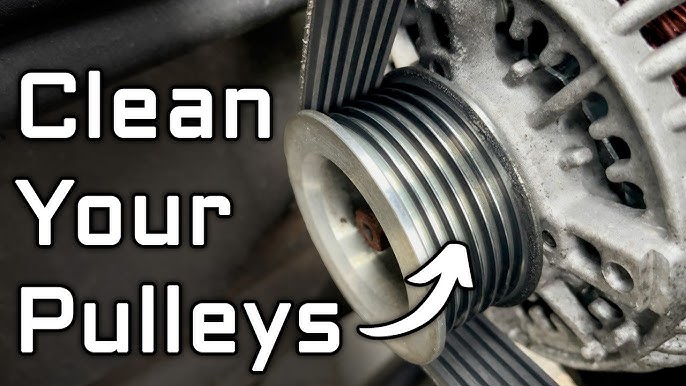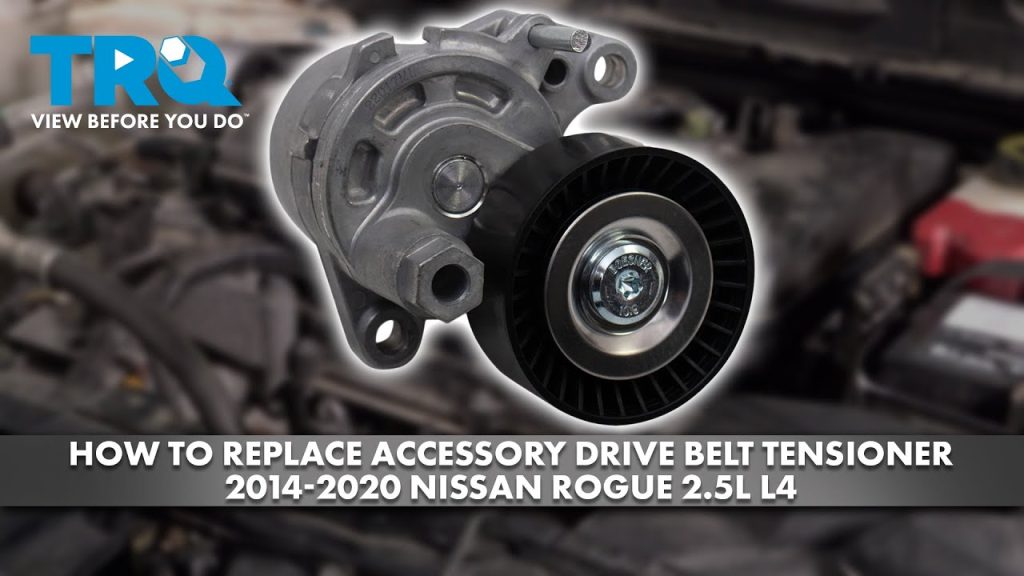Are you stuck trying to remove your serpentine belt tensioner but don’t have the right tool? You’re not alone, and the good news is—you don’t always need specialized equipment to get the job done.
Imagine saving time, avoiding expensive trips to the mechanic, and fixing your car with just a few simple tricks. You’ll discover easy, step-by-step methods to remove your serpentine belt tensioner safely and effectively, even without a tool. Keep reading, and take control of your car repairs today!
Credit: www.elementownersclub.com
Serpentine Belt Tensioner Basics
The serpentine belt tensioner keeps the belt tight. It helps the belt run smoothly across pulleys.
Without the tensioner, the belt could slip or come off. This can cause engine parts to stop working properly.
Role Of The Tensioner
The tensioner holds the serpentine belt tight. It keeps the right amount of pressure on the belt.
- Keeps the belt from slipping off the pulleys
- Absorbs shocks and vibrations
- Maintains proper belt alignment
- Extends the life of the belt and engine parts
Common Tensioner Types
There are different tensioner types for various engines. Each type works a bit differently.
| Tensioner Type | Description |
| Spring-loaded | Uses a spring to keep belt tight automatically |
| Manual | Needs to be tightened by hand or with a tool |
| Hydraulic | Uses fluid pressure to maintain belt tension |
Signs Of A Faulty Tensioner
The serpentine belt tensioner keeps the belt tight and running smoothly. A bad tensioner can cause many problems with your car.
Knowing the signs of a faulty tensioner helps you fix it early. This stops bigger damage to your engine parts.
Noise And Squealing
A worn tensioner often makes noise. You might hear squealing or chirping sounds from the engine area.
This noise happens because the belt slips or the tensioner pulley is not spinning well. The sound gets worse when you start the car or turn on the AC.
- Squealing when starting the engine
- Chirping sounds during acceleration
- Noise changes with engine speed
Belt Wear And Damage
A bad tensioner puts extra stress on the serpentine belt. This causes the belt to wear out faster or get damaged.
Look for cracks, fraying, or missing chunks on the belt. These signs mean the tensioner is not holding the belt tight.
- Cracks along the belt edges
- Frayed or torn belt material
- Glazing or shiny spots on the belt
- Loose or slipping belt
Preparing For Removal
Removing the serpentine belt tensioner without a tool needs careful preparation. Safety and having the right supplies help the job go smoothly.
Before starting, take time to prepare your workspace and gather what you need. This makes the task safer and easier.
Safety Precautions
Work safely to avoid injury or damage. Follow these precautions before removing the tensioner.
- Wear safety glasses to protect your eyes from debris.
- Use gloves to keep your hands safe from sharp edges.
- Make sure the engine is off and cool to avoid burns.
- Disconnect the battery to prevent accidental starts.
- Work in a well-lit area with clear space around the engine.
Gathering Basic Supplies
Having the right supplies ready saves time and effort. Here is a table listing basic items you may need.
| Item | Purpose |
|---|---|
| Wrench or Socket Set | For loosening bolts if needed |
| Flathead Screwdriver | To help release clips or hold parts |
| Work Gloves | Protect hands from cuts and scrapes |
| Rag or Cloth | Clean parts and wipe oil or dirt |
| Flashlight | Improve visibility in tight spaces |

Credit: www.youtube.com
Removing The Tensioner Without Tools
Removing a serpentine belt tensioner usually needs special tools. You can remove it without tools by using simple tricks. This guide shows how to do it safely and easily.
Make sure you understand where the tensioner is and how to apply pressure. Using household items can help as a lever to release tension.
Locating The Tensioner
The serpentine belt tensioner is a small pulley attached to the engine. It keeps the belt tight and running smoothly. Find it by looking for a pulley with a spring mechanism.
It is near the front of the engine and close to the belt. Look for a part that can move when pushed. This part is the tensioner.
Using Household Items As Leverage
You can use things like a strong screwdriver, a wrench, or a metal rod. These items can act as a lever to move the tensioner. Choose something long and sturdy.
Insert the item into the tensioner’s slot or arm. Push or pull gently to release the belt tension. Be careful not to damage the tensioner or belt.
- Metal rod or strong screwdriver
- Long wrench or crowbar
- Piece of sturdy metal or wood
Step-by-step Removal Process
First, locate the tensioner and identify a place to apply leverage. Insert your chosen household item into the tensioner’s arm or slot.
Push or pull the lever to release the belt tension. While holding the tensioner, carefully slide the belt off the pulley. Slowly release the tensioner back to position.
- Find the tensioner pulley near the belt
- Insert a lever tool into the tensioner arm
- Push or pull to release tension
- Slide the belt off the pulley carefully
- Release the tensioner slowly back
Tips For Reinstalling The Tensioner
Reinstalling the serpentine belt tensioner without a tool can be tricky. You need to make sure the belt is aligned well and the tensioner works properly. This guide will help you with two important steps.
Follow the instructions carefully to avoid damage and ensure your engine runs smoothly.
Aligning The Belt Correctly
Proper alignment of the serpentine belt is key to the system’s performance. If the belt is off track, it can slip or wear out quickly.
- Check all pulleys for dirt or damage before placing the belt.
- Position the belt so it fits snugly in all pulley grooves.
- Make sure the belt runs in the correct direction as marked.
- Keep the belt centered on each pulley to avoid rubbing edges.
- Manually rotate the pulleys to confirm smooth belt movement.
Testing Tension And Function
After aligning the belt, check the tensioner to make sure it holds the belt tight. The right tension prevents slipping and noise.
| Check Point | What to Look For | Action |
| Tensioner Movement | Moves smoothly without sticking | Adjust or replace if stiff or stuck |
| Belt Tension | Belt feels tight but not too hard | Reposition tensioner if belt is loose |
| Noise Test | No squealing or grinding sounds | Inspect belt and tensioner for wear |
| Engine Running | Belt runs steady without slipping | Retighten tensioner if slipping occurs |
Credit: www.spyderchat.com
When To Seek Professional Help
Removing a serpentine belt tensioner without tools can be tricky. It’s important to know when to call a professional.
Doing it wrong can damage your car. Here are some situations where professional help is a good idea.
Complex Belt Systems
Some cars have complex belt systems. They may have multiple belts or tensioners. This makes the process harder.
If your car has a complicated setup, a mechanic can help. They have the tools and experience to do it right.
- Multiple belts can be confusing
- Special tools are often needed
- Professional help prevents mistakes
Safety Concerns
Working on your car can be dangerous. The serpentine belt is under tension. It can snap and cause injury.
If you are unsure about safety, call a professional. They have safety gear and know the risks.
- Belts can snap and cause injury
- Professionals use safety gear
- Knowledge of risks keeps you safe
Frequently Asked Questions
How Can I Remove A Serpentine Belt Tensioner Without A Tool?
You can use a sturdy pry bar or large screwdriver carefully. Apply steady pressure to release tension slowly. Always ensure the engine is off and cool before starting.
Is It Safe To Remove The Tensioner Without A Proper Tool?
Removing without a tool can be risky and may damage components. Use caution and avoid excessive force. Safety gloves and eye protection are recommended.
What Alternative Methods Exist To Release Serpentine Belt Tension?
Besides a pry bar, some use adjustable wrenches or pliers. These tools can help move the tensioner arm carefully. Avoid makeshift tools that might slip or break.
How To Avoid Damage When Removing The Tensioner Manually?
Apply gentle, controlled pressure to avoid snapping the tensioner spring. Work slowly and check belt alignment after removal. Damaged tensioners may cause belt failure or engine issues.
Conclusion
Removing a serpentine belt tensioner without a tool is possible with patience. You can use common household items carefully to release tension. Always be cautious to avoid injury or damage. Taking your time makes the process easier and safer. This simple method helps when tools are not available.
Try these steps and see how well they work for you. Practice makes the task less stressful and more manageable. Keep safety first and proceed slowly for best results.


